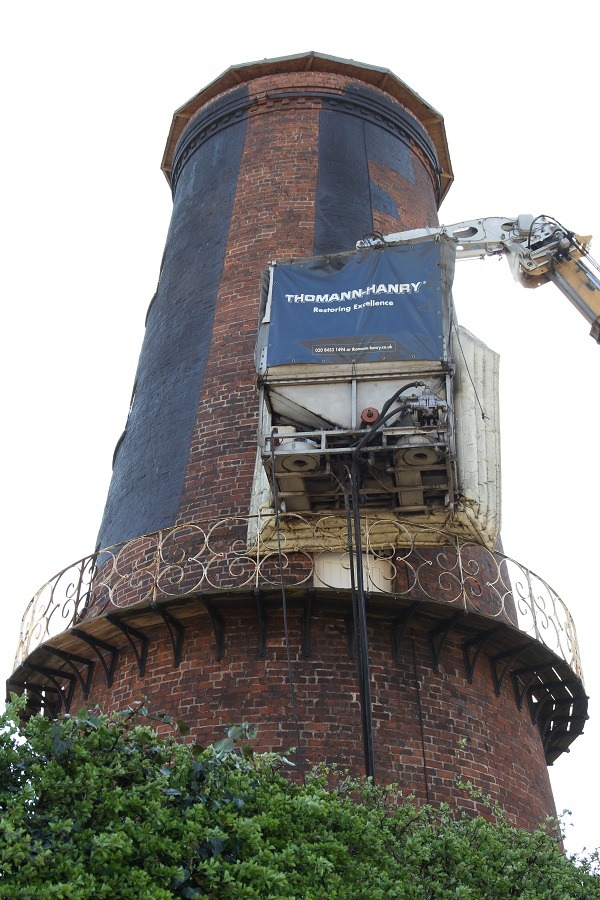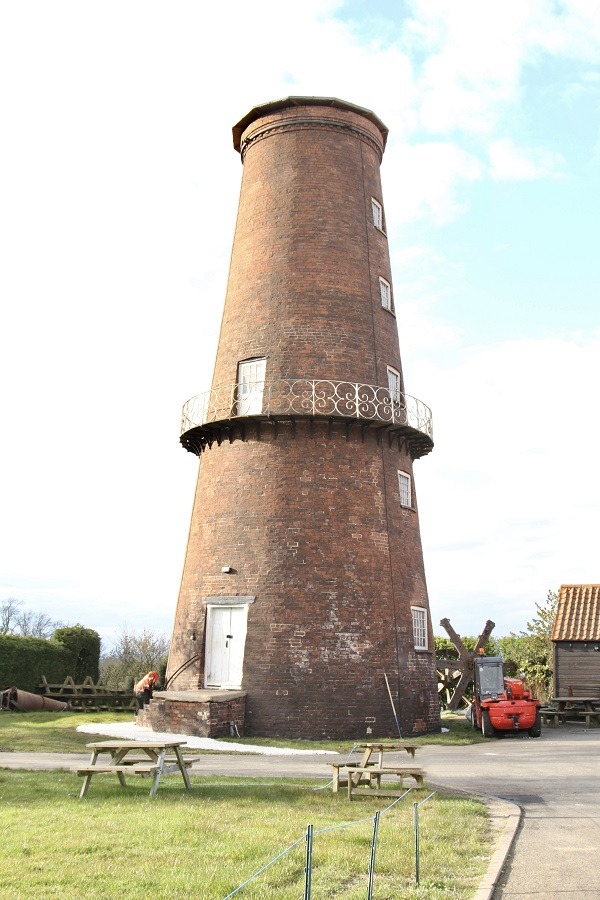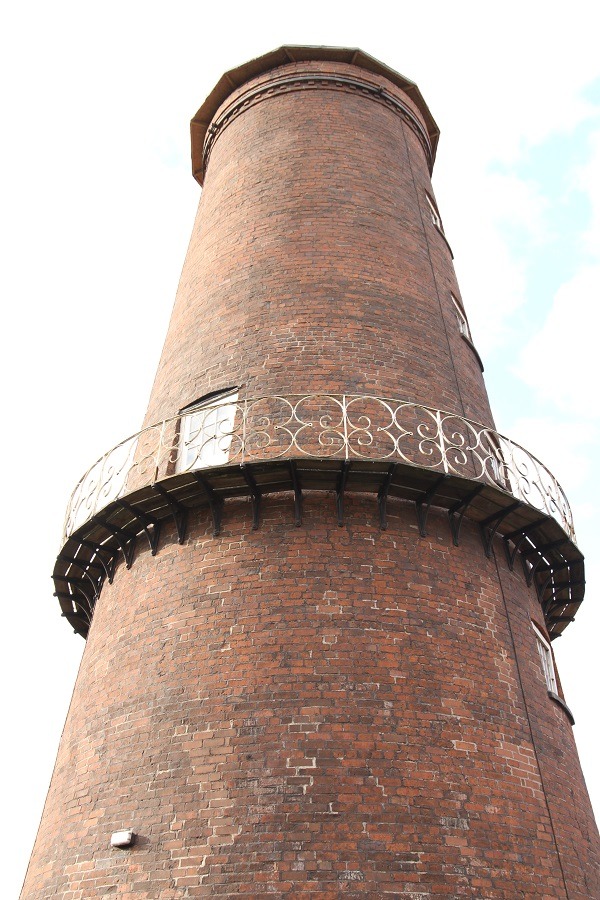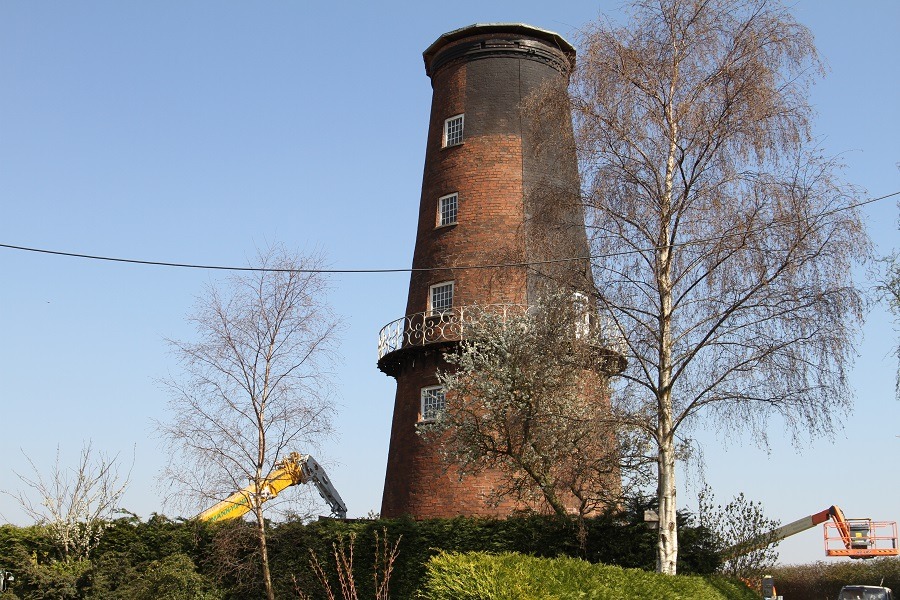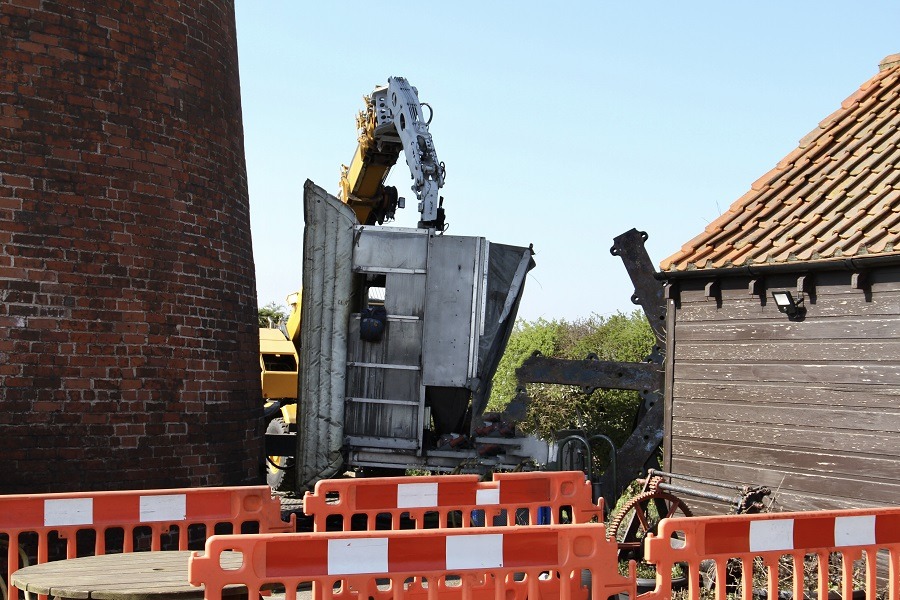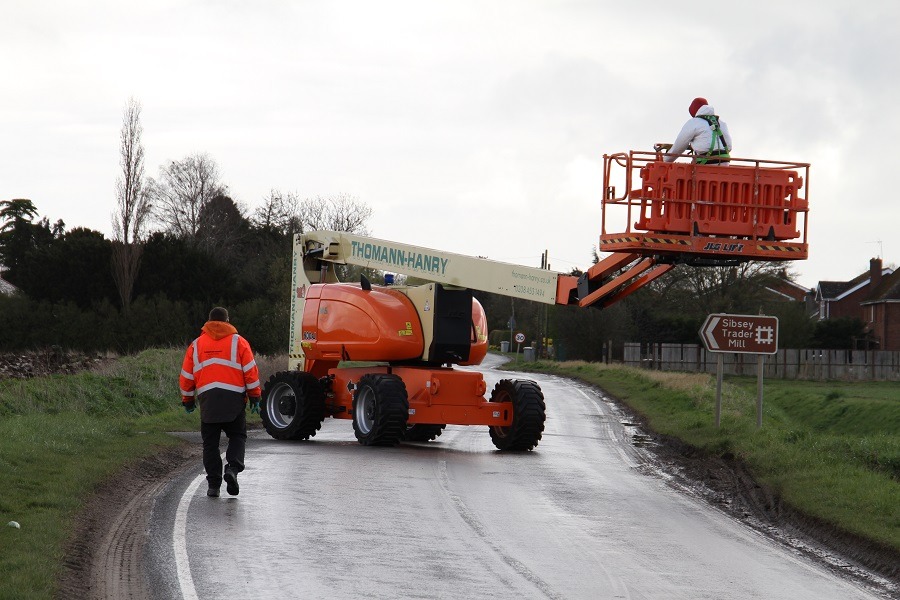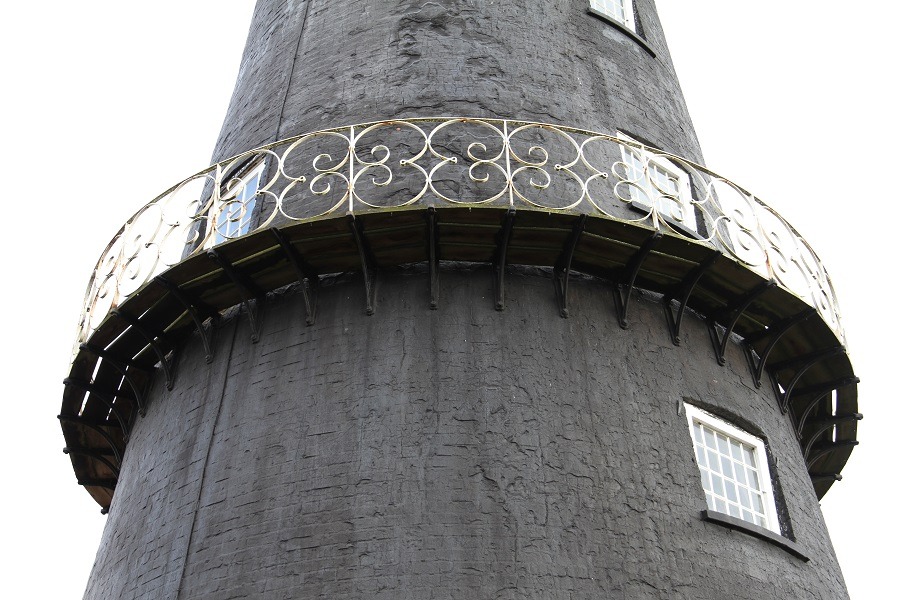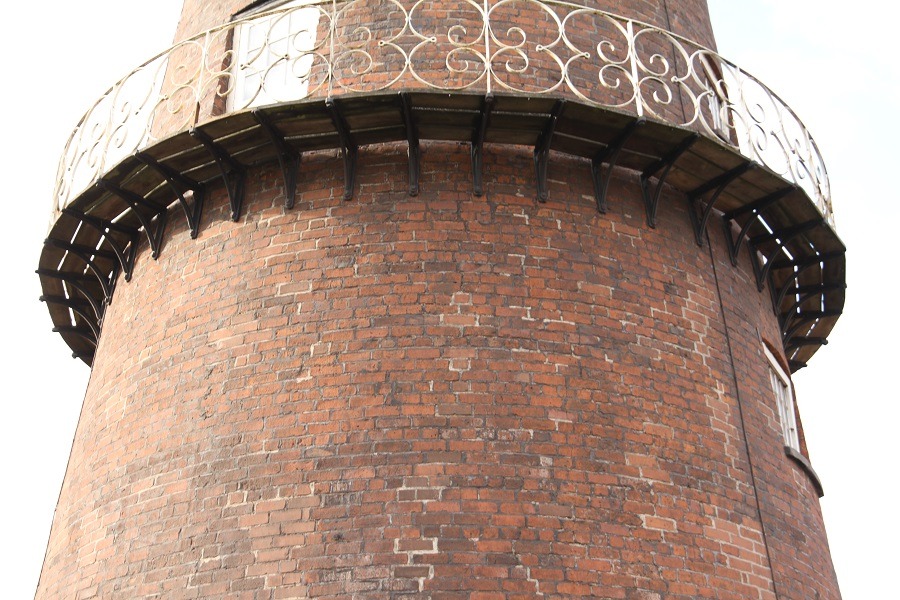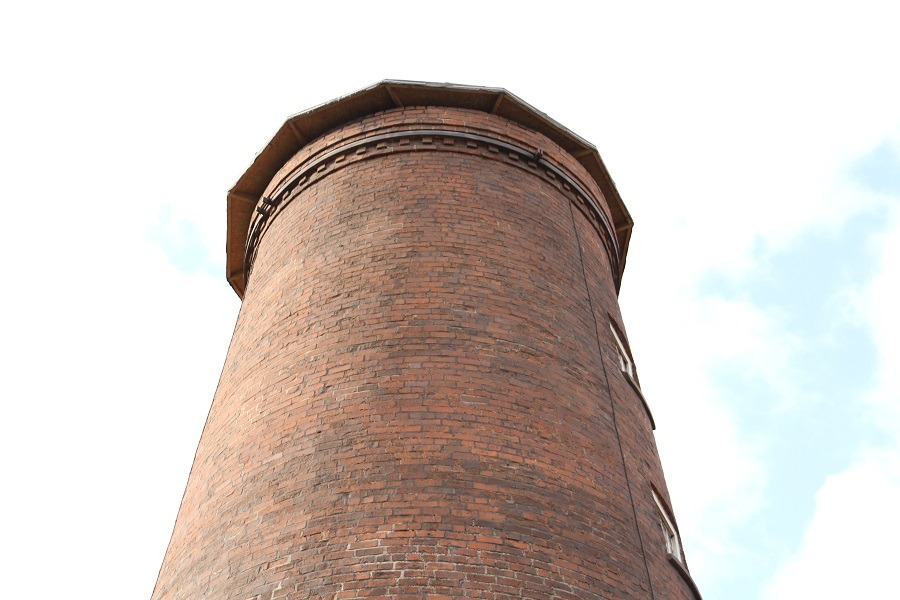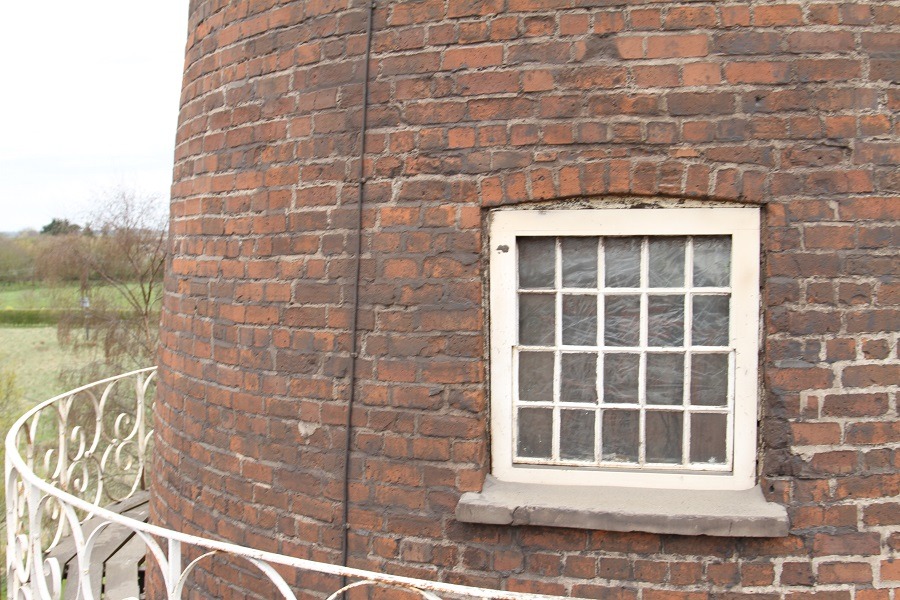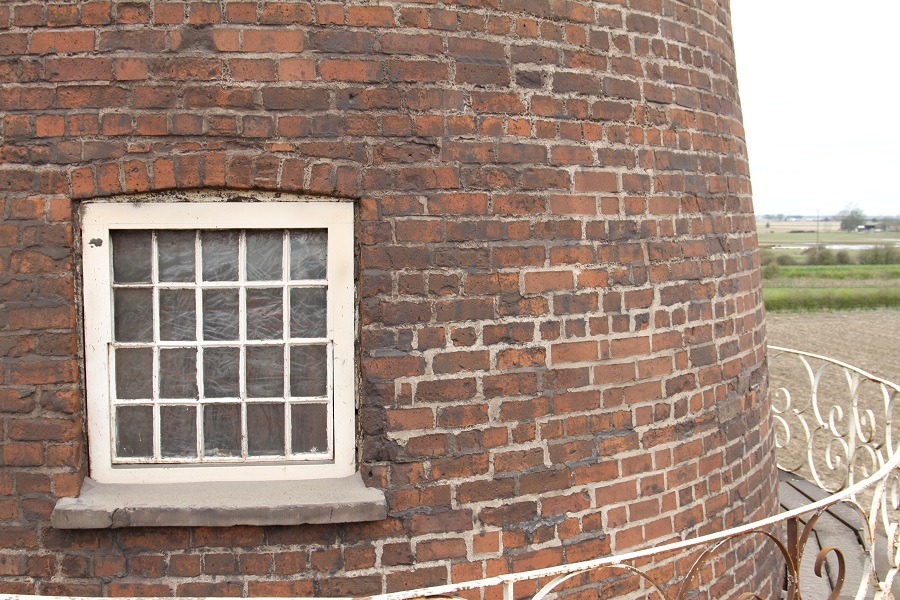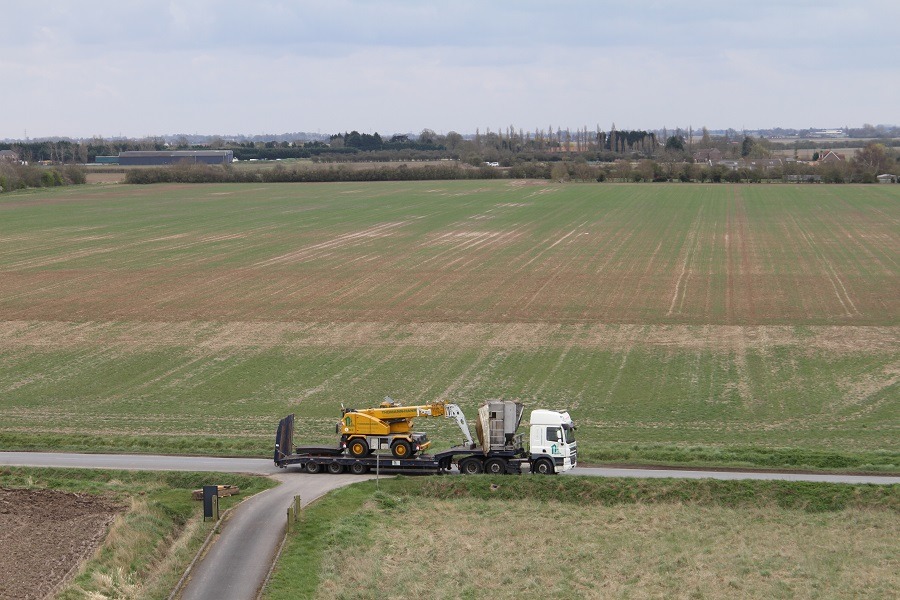Sibsey Trader Windmill brick cleaning
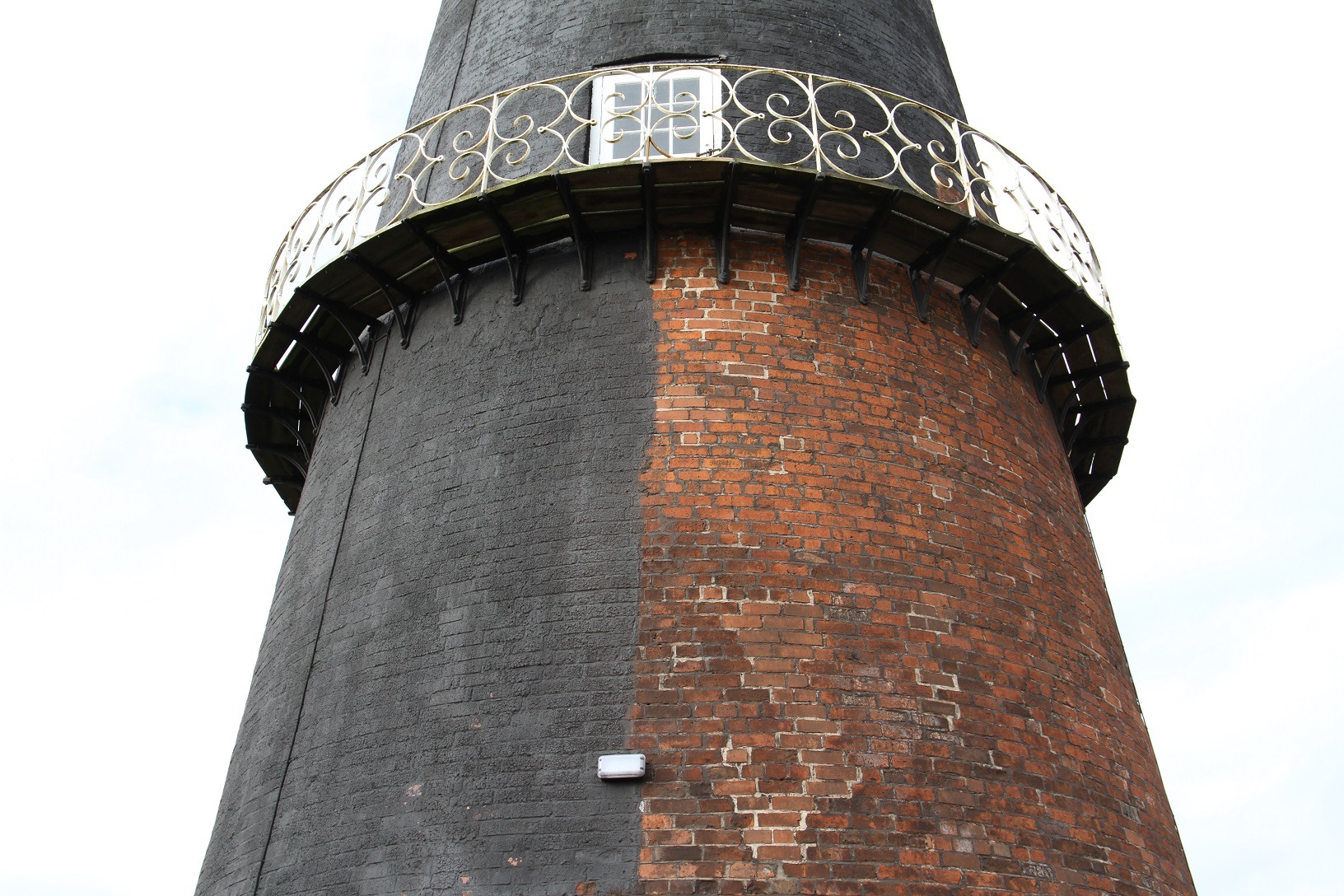
Thomann-Hanry® have taken on some interesting challenges since the company’s inception in 2005, but a 74ft Victorian windmill in Lincolnshire has to rank amongst the most unusual. Not only that, it has finally revealed an effective solution to issues caused by coal tar water proofing, which was widely used in 1970s.
façade gommage® solves the coal tar conundrum at Sibsey Trader Windmill
Sibsey Trader Windmill, some five miles north of Boston in Lincolnshire, was built in 1877 to replace a small post mill by local millrights Saundersons of Louth.
Designed in typical Lincolnshire style and a fine example of its type, it is one of the few six-sailed mills remaining in England today. Damaged during gales in 2018, its sail, fantail and cap were removed for repair, but the issue of coal tar water proofing remained.
Although the site is independently run and managed by Ian Ansell, its status as a listed building brought English Heritage into the picture, as they sought to help with specialist care to address the coal tar issue. Effective in the short term, coal tar water proofing was used extensively on barns, windmills and other agricultural structures in the 70s. Now, however, property owners are finding that the coating is breaking up, allowing water to permeate the brickwork and cause damage in what are often vulnerable historical buildings.
Effective brick cleaning
Other brick cleaning methods, including water-based systems, were attempted but found ineffective at removing the tar without damaging the brickwork beneath. The issue called for a gentler approach that protected the underlying structure.
Commissioned by Donald Insall Associates on behalf of English Heritage, Thomann-Hanry® were approached to carry out a trial clean using their patented façade gommage® system. Projecting fine powders under compressed air across – as opposed to against – the surface, the technique proved perfectly suited to the safe removal of coal tar.
With six storeys above ground, it is not the tallest of windmills, but its location in the middle of an open field left it exposed to easterly winds blasting in from The Wash, some 10km distant. Having completed a thorough building survey, Thomann-Hanry® concluded that works were best carried out from their façade gommage® platform.
With a total surface of 17 metres high by 30 metres around, cleaning took the three-man team ten days to complete, revealing the windmill as it first appeared.
As a new breed of windmill offers energy solutions for the future, it’s heartening to know that the preservation of their historical forebears is assured.

